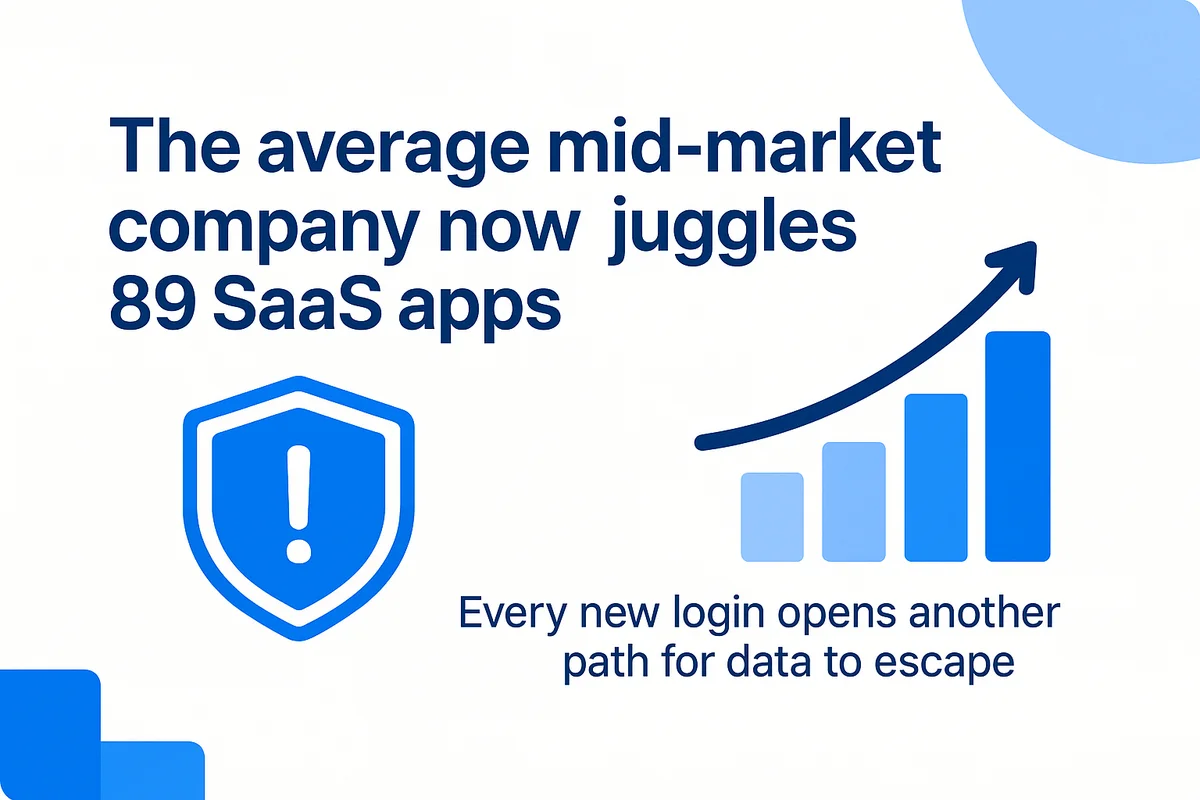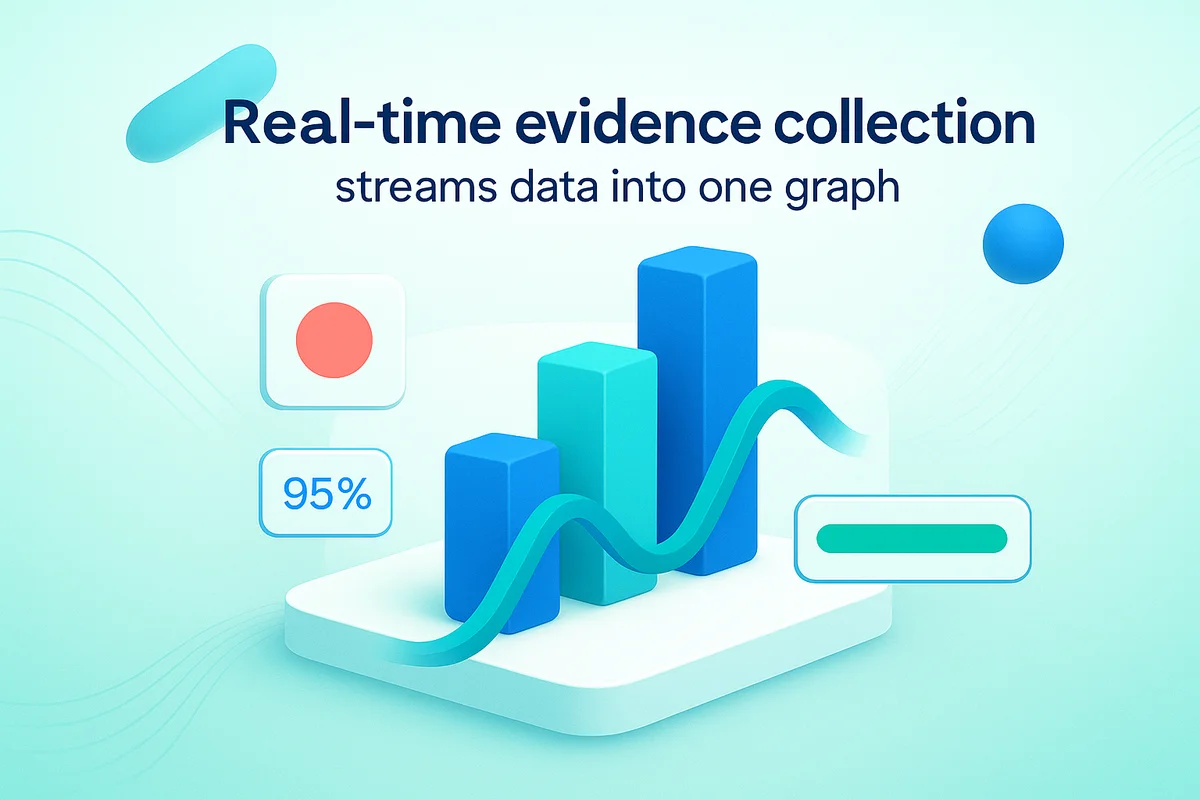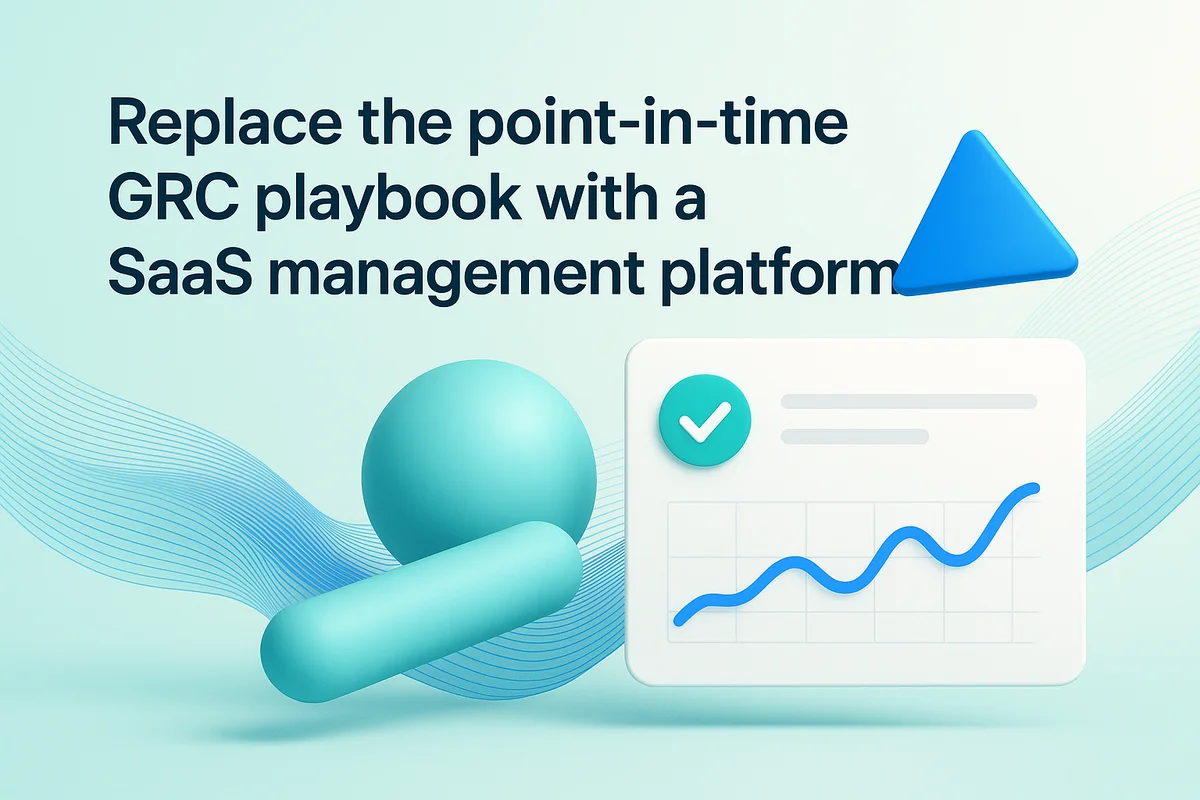Why GRC Requires a SaaS Management Platform

SaaS adoption has surged well beyond what most governance teams anticipated. Built for data centers and VPN walls, legacy GRC suites fall behind the moment someone installs a new browser app. When auditors rely on that outdated map, security and finance uncover shadow spend, unchecked data flows, and breaches only after the damage is done.
A SaaS Management Platform, or SMP, flips the script by pulling live inventories, configuration states, and activity logs straight from each app’s API. Risk signals surface the instant a new OAuth grant appears, kicking off auto-scored vendor profiles, drift alerts, and policy playbooks. Procurement also receives contract reminders and cost insights without begging anyone for spreadsheets.
To keep pace with self-serve SaaS and still satisfy auditors, GRC teams need an SMP that unifies risk visibility, continuous compliance, and policy enforcement.
Table of Contents
- Why do traditional GRC tools fail for SaaS
- How do SMPs improve vendor risk management
- How do SMPs enable continuous compliance tracking
- How do SMPs centralize policy and drift detection
- How do SMPs simplify access reviews
- Conclusion
- Audit your company's SaaS usage today
Why do traditional GRC tools fail for SaaS
Security teams still rely on controls designed for a data center that disappeared years ago. Okta found the average mid-market company now juggles 89 SaaS apps, up 24 percent in one year. Every new login opens another path for customer data, billing details, or source code to escape. Old governance, risk, and compliance suites were never built for that pace, and their blind spots widen with each self-service signup.
Legacy GRC tooling keeps its gaze on the perimeter instead of the application. It pulls rough logs from firewalls and VPNs, then matches purchases to a contract list that updates only when finance uploads an invoice. The snapshot it creates goes stale long before the quarter ends. Analysts slog through spreadsheets and ping business owners for answers locked behind yet another login. The blind spots pile up fast:
- No direct API connections to common SaaS platforms, so entitlements and configuration details remain hidden.
- Slow agents or network probes overlook browser-based OAuth sessions staff launch during lunch.
- Vendor-review tickets move by hand and often close after the app is already live.
Department buyers now swipe cards without looping in security or procurement. Marketing grabs a social tool, Product rolls out a feature-flag service, HR tests a learning portal. Each purchase skips the questionnaire and spreads sensitive data into places nobody tracks. Shadow spend hurts the budget, yet the bigger cost arrives when a public share link exposes customer PII for weeks unnoticed.
Quarterly audits promise assurance yet land weeks late and miles short. By the time evidence is sampled, access roles have flipped, admins have left, and default settings have drifted. Static controls let executives sleep too well, while attackers appreciate the extra time. Until visibility shifts from endpoint logs to SaaS APIs, governance stays hazy and the compliance clock keeps ticking in the dark.

How do SMPs improve vendor risk management
Vendor risk changes every day because anyone with a corporate card can spin up a new SaaS subscription. Most GRC tools notice the addition months later, usually when an auditor asks why customer data sits in an undeclared service. By that point, contracts are signed, data has moved, and fresh SOC 2 gaps are in place.
A SaaS Management Platform (SMP) stops that gap from opening. It connects to single sign-on, finance systems, and browser OAuth logs, then fingerprints every cloud vendor within minutes. The platform also polls public sources (security pages, breach trackers, even LinkedIn headcount) to build a living dossier on each provider. Because the feed refreshes each day, risk scores jump the moment a vendor loses a compliance badge or reports an incident rather than after the quarterly review.
With an SMP in place, the following key workflows come online:
- Auto-block high-risk apps in procurement portals until a security questionnaire clears.
- Push tailored due-diligence forms the instant a new vendor enters the estate, avoiding the email ping-pong of legacy VRM portals.
- Surface contracts set to auto-renew next month so legal can add data deletion clauses before the renewal fires.
- Flag overlapping apps (such as two different file-sharing tools) to help finance cut redundant spend and shrink the attack surface in one move.
Fast, real-time data quickly changes the conversation with business owners.
Keeping every vendor on a live dashboard dramatically cuts audit prep time for the security team. Gartner says the average enterprise now runs 371 SaaS applications, far beyond what any manual VRM program can follow. With an SMP, CISOs hand auditors a dynamic vendor roster complete with up-to-the-minute SOC 2 and ISO 27001 evidence. The result is fewer follow-up requests, faster report closure, and less stress when regulators appear without warning.

How do SMPs enable continuous compliance tracking
Real-time evidence collection keeps compliance on track; waiting until quarter-end invites gaps. Ticket chases crumble once a team relies on dozens of SaaS tools, never mind hundreds.
An SMP taps directly into each application’s API and streams control data into one graph. Instead of stitching screenshots together, teams watch live indicators. Evidence shows up automatically:
- Access logs showing who touched customer data and when
- Encryption configuration and key-management status for every tenant
- Data residency flags mapped to country or region requirements
- MFA and SSO adoption rates by business unit
- Backup and retention settings tied to workload criticality
Dashboards turn that data torrent into simple, actionable compliance cues. A red tile appears when MFA coverage slips below 95 percent, while a green bar confirms Salesforce login logs arrived in the past hour. Because every control has a tolerance band, the moment drift starts the SMP pings the owner in Slack, or kicks off an auto-fix playbook that restores the policy.
Auditors focus less on speed of fixes than on the proof behind them. SMPs tag each change with who performed it, what happened, and when, then lock the record in an immutable ledger. During an ISO 27001 or SOC 2 review, exporting a year’s evidence takes three clicks and saves weeks of prep. Gartner reports that teams using API-driven evidence tools trim external audit costs by 30 percent because consultants stop chasing missing artifacts. Continuous tracking turns compliance into quiet background work instead of an annual fire drill.

How do SMPs centralize policy and drift detection
Centralized policy enforcement turns sprawling SaaS stacks into guardrails both auditors and admins can live with. When every app speaks its own language, small setting changes add up to major exposure. A developer flips file sharing to “public,” marketing grants an unchecked OAuth to a flashy AI add-on, and no one sees the risk until an incident report lands. An SMP connects every app through APIs, pulls each configuration into one dashboard, and applies one rule set without waiting for quarterly clean-up days. The result is less finger-pointing and quicker fixes.
A single policy engine cuts through vendor screens that bury critical switches behind five clicks. Security teams can declare, “Keep customer data encrypted at rest,” then watch the platform push that command to Salesforce, Zendesk, and every niche tool that stores customer fields. The same engine forces SSO everywhere, so credentials stop living in browsers and notes stuck to monitors. Mean time to policy enforcement falls from weeks to minutes because the platform doesn’t rely on ticket queues.
An SMP surfaces configuration drift as soon as seems, not hours or days later. Instead of parsing CSV exports, teams get direct alerts when any control flips from green to yellow. Common reactions include:
- Revert the setting and write the event to the audit log.
- Open a Slack channel with the app owner, pre-filled with remediation steps.
- Send the incident for deeper review if the vendor holds sensitive data.
These playbooks work because the platform understands context such as data type, user role, and business unit. Okta’s 2022 Business at Work report found companies that enforced unified SSO across more than 50 SaaS apps cut credential phishing by 30 percent; similar gains follow when encryption or retention policies ride the same rails.
Delegated administration processes keep security teams from becoming an operational bottleneck. Business units can still tweak non-critical settings, yet every change meets guardrails before going live. Each adjustment lands in an immutable log, proving to regulators that least privilege isn’t just theory, it lives in code.

How do SMPs simplify access reviews
SaaS access shifts minute by minute, but many teams still audit static CSV exports with gaps.
An SMP hooks into each vendor API and builds a real-time map of users, roles, and tokens across every workspace. A quick glance spots the contractor who kept Jira admin rights six months after the hand-off and saves a half-week hunt.
Extra context turns that map into a risk queue instead of a guessing game. A read-only intern account in Canva can wait, while an old service token with push rights in GitHub jumps to the top. Because the dashboard blends user data, spend, sensitivity, and breach history, teams act on the right items instead of wading through alerts.
Cleanup moves faster when the work arrives as plain prompts:
- Tag orphaned accounts and kick off one-click deprovisioning through Okta or native SCIM.
- Schedule quarterly access attestations that land in asset owners’ inboxes and send their own reminders.
- Flag privilege changes as soon as a sensitive app such as Salesforce records the new role.
Gartner links 75 percent of cloud security failures to access errors, so shorter review loops matter. With an SMP, attestations roll all year instead of cramming into the week before audit, and every approval sits in a tamper-proof log that feeds evidence collectors already working. When a data owner kills access, the platform pushes the change at once and erases the window attackers enjoy.
Continuous monitoring keeps the loop closed and ready to react to trouble. If a service account exports forty thousand rows at 2 a.m., the anomaly engine alerts GRC and can freeze the token until someone looks. Security gains data for investigations, auditors see proof of least-privilege at any time, and finance watches license waste shrink. Business teams keep moving because the heavy work runs in the background, not in another permissions meeting.
Conclusion
SaaS risks move faster than any quarterly checklist can follow. When applications multiply, legacy GRC tools slow to a crawl, and teams end up chasing spreadsheets, missing shadow contracts, hidden data flows, and configuration slips that later blow up in audits. A SaaS management platform spots every service, captures live evidence, and pushes fixes long before the risk shows up.
The next step is simple: replace the point-in-time GRC playbook with a SaaS management platform that delivers real-time visibility, continuous control checks, and lighter audits. Your team gets breathing room.

Audit your company’s SaaS usage today
If you’re interested in learning more about SaaS Management, let us know. Torii’s SaaS Management Platform can help you:
- Find hidden apps: Use AI to scan your entire company for unauthorized apps. Happens in real-time and is constantly running in the background.
- Cut costs: Save money by removing unused licenses and duplicate tools.
- Implement IT automation: Automate your IT tasks to save time and reduce errors - like offboarding and onboarding automation.
- Get contract renewal alerts: Ensure you don’t miss important contract renewals.
Torii is the industry’s first all-in-one SaaS Management Platform, providing a single source of truth across Finance, IT, and Security.
Learn more by visiting Torii.
Frequently Asked Questions
Traditional GRC tools are outdated, focusing on perimeter controls that ignore SaaS dynamics. They lack real-time visibility into new app installations, leading to security gaps and late audits.
SaaS Management Platforms (SMPs) connect to various systems, providing real-time insights into vendor risk, enabling immediate action when compliance issues arise, and reducing the time between vendor discovery and risk evaluation.
SMPs continuously collect compliance data through APIs, displaying real-time indicators that highlight risks. This proactive approach reduces gaps associated with traditional quarterly audits.
SMPs unify policy enforcement across SaaS applications, detecting configuration changes in real-time, which allows security teams to implement immediate corrective actions without long delays.
SMPs automate access reviews by creating real-time maps of user roles across applications. This allows teams to quickly identify and remediate security risks without manual CSV checks.
Adopting an SMP enhances visibility into SaaS usage, streamlines compliance processes, reduces audit workloads, and mitigates risks associated with unauthorized applications, ultimately saving time and resources.
Companies should consider implementing an SMP to gain real-time insights into SaaS applications, manage vendor risks effectively, and ensure continuous compliance without falling behind.

